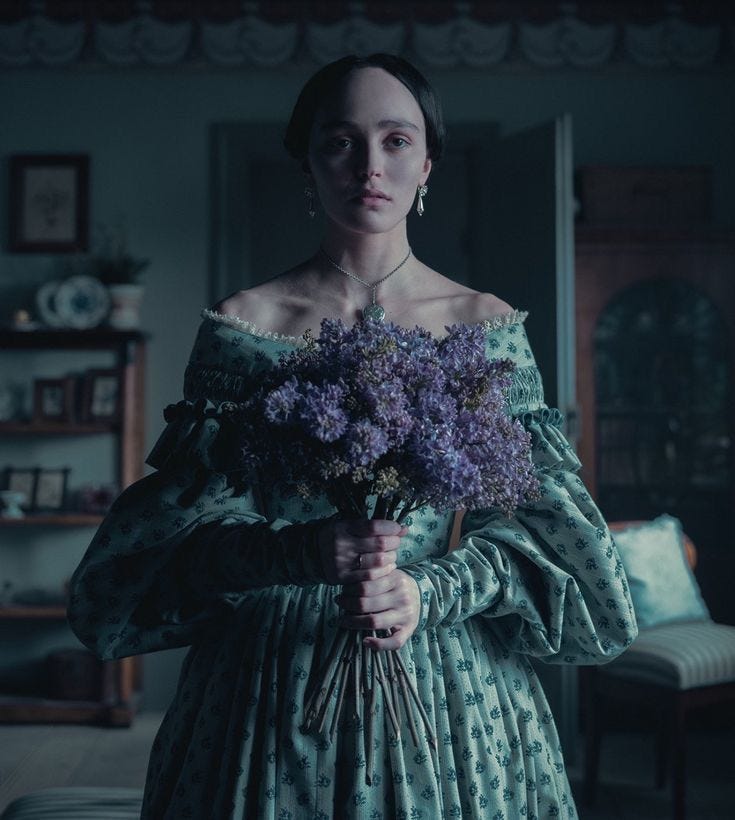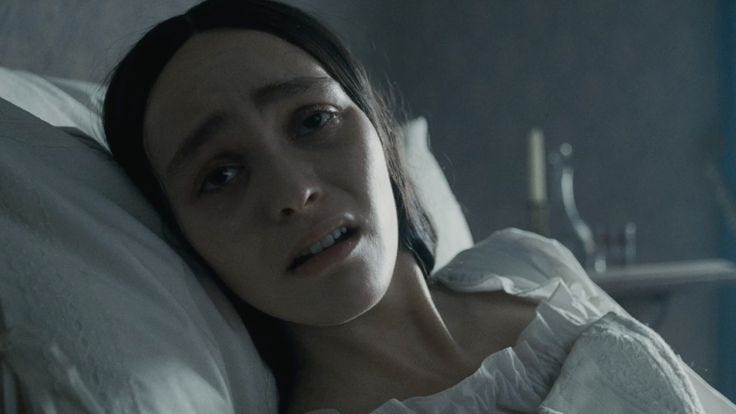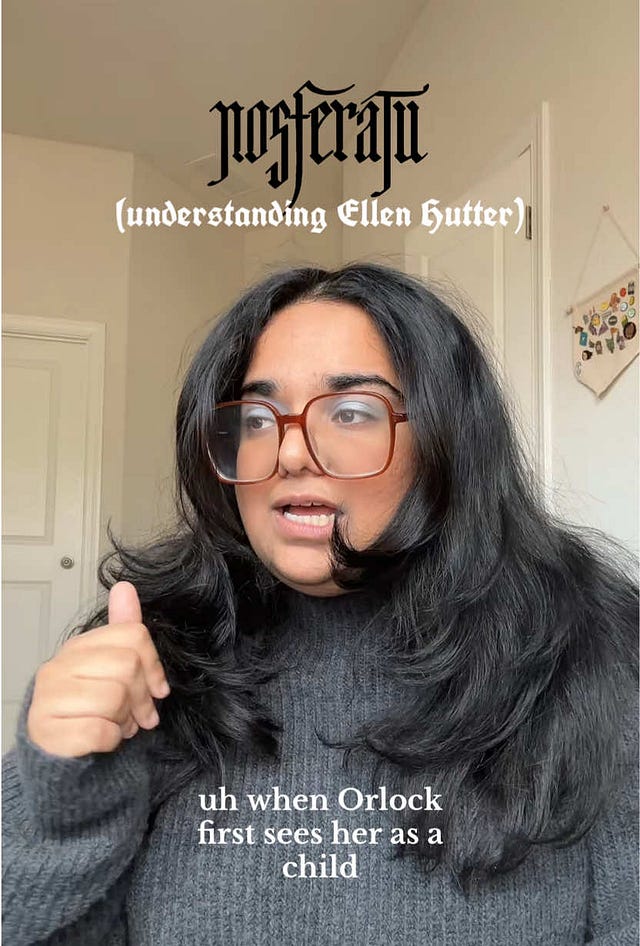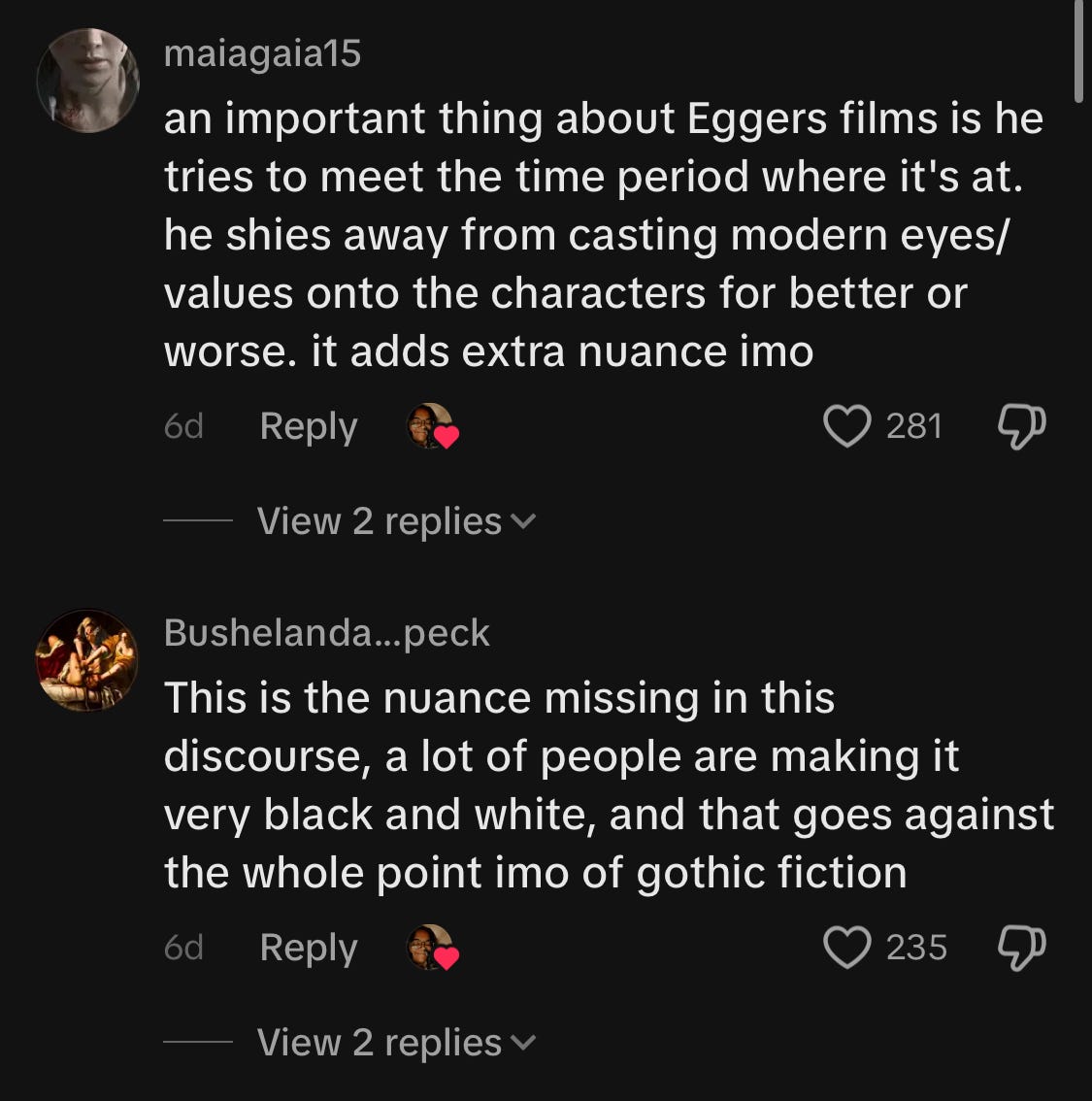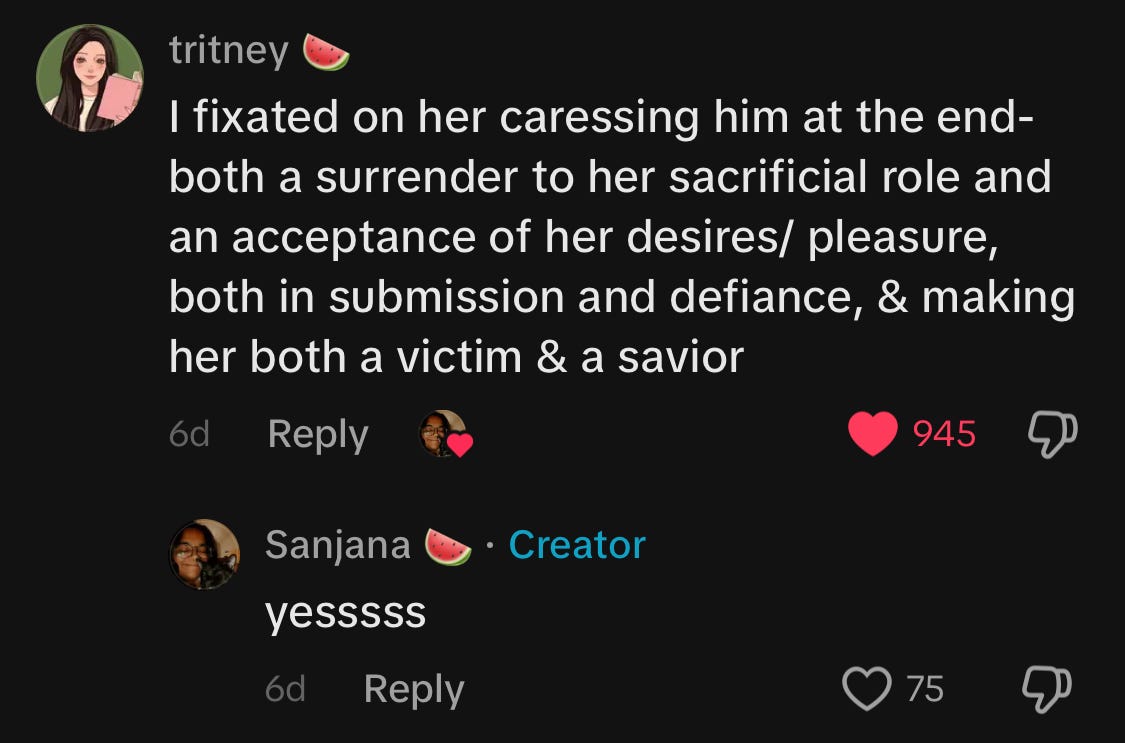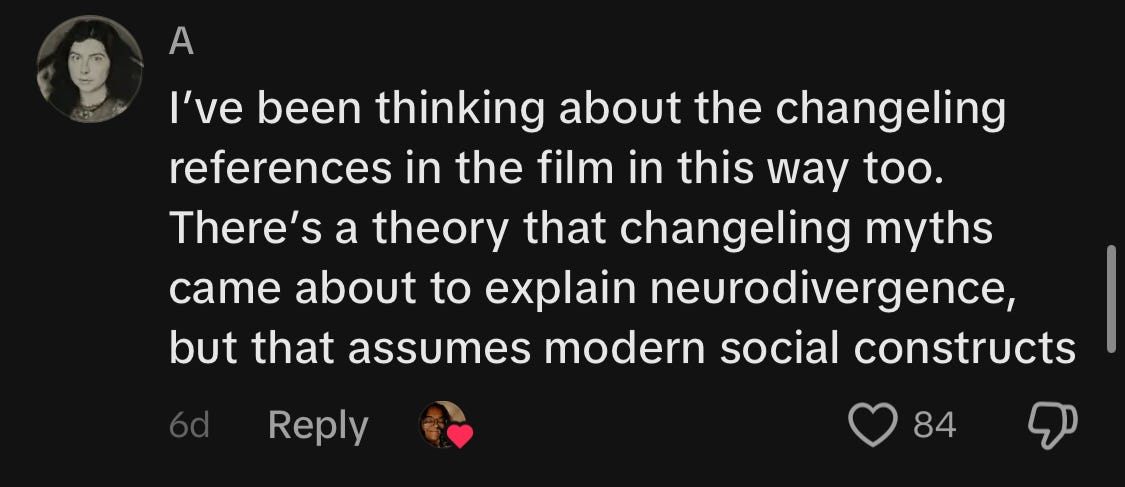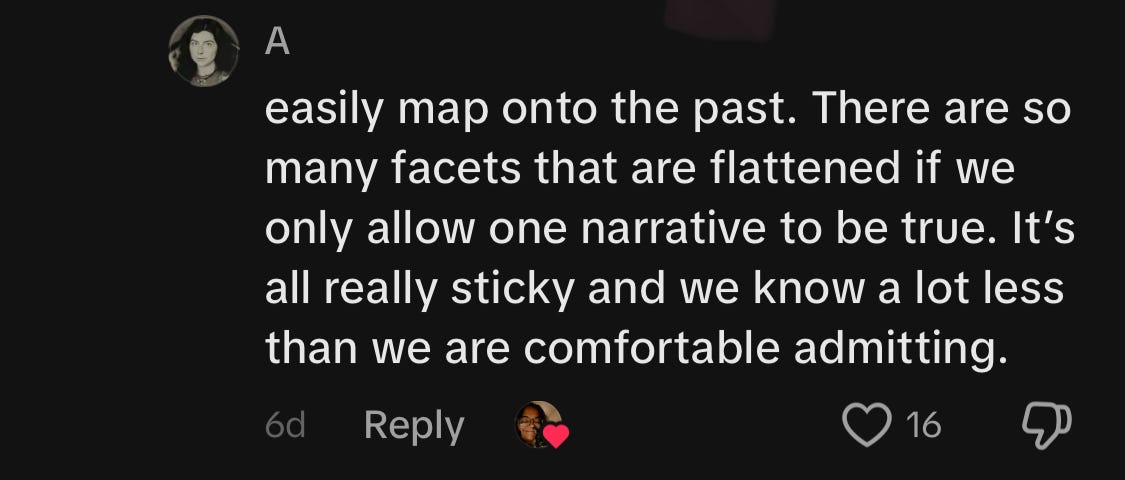This post is too long for email! Either read it on the website or the app! If you enjoy my work, please subscribe! <33 (Consider becoming £3.50/month or £20/year paid subscriber)
It’s 2025; I finally had the first gym session of the year, and I’ve published three writings so far (talking about the paranormal, this, and how God-awful Carrie and Big’s relationship is— which is coming next week, stay tuned). And I’ve seen the first horror film of the year, Nosferatu. Starring Lily-Rose Depp and Nicholas Hoult and is directed by Robert Eggers. (Believe it or not, this is the first movie I’ve seen of his, and I love it and will be checking out more of his films).
Anyway, I was, to say the least, VERY excited when I heard of this film’s release. Not only was it a star-studded cast and a genre that I quite enjoy, but it’s also about something that has fascinated me since I was really young: the classic vampyre stories.
I’m talking Dracula by Bram Stoker, Carmilla by Sheridan Le Fanu and one of those dark children’s book illustrations about the history of vampires. (I loved that book. I wonder if I still have it back home…) Then, I moved on to the very modern and Hollywood-esque interpretations of vampires like the world-renowned and bedazzling— Edward Cullen. As well as the Vampire Academy because I saw the movie and was so obsessed with it that I had to buy the book. Not to forget the iconic Interview with the Vampire, starring Tom Cruise and the Brad Pitt.
I also had this weird phase of wanting to become a vampire. (Come on, I was like 8 or 9, or 10, the most). I don’t know if any of you remember where people would post potions or spells on YouTube for you to turn into one.
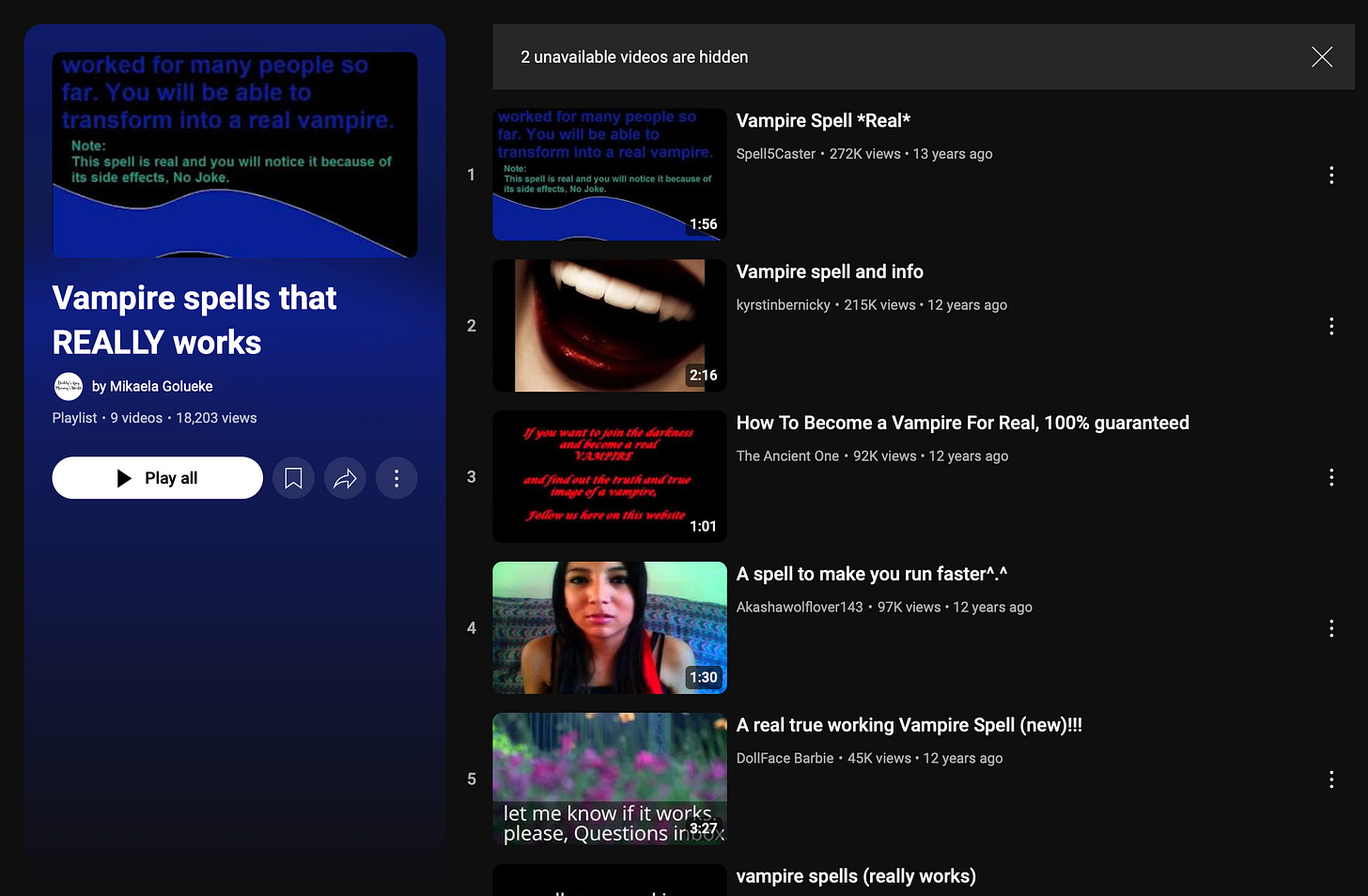
And I remember I would DIY fangs with straws and some masking tape (to match the colour of my teeth). Then, I brought it to school one time? To be fair, my primary school was surrounded by a lot of trees and I guess 10 year-old me thought it’d be fitting to play “vampires” after school. Anyway, I was one hell of a weird kid.
Back to Nosferatu, did you know, that the first Nosferatu film, directed by F.W. Murnau in 1922 was sued by Bram Stoker’s widow because, guess what!!! Nosferatu is a loosely adapted version of Dracula by Bram Stoker, and they made that film without permission and “tried” to avoid legal issues by changing names and certain plot details, but clearly that didn’t work.
By 1925, the court ruled in Florence (Stoker’s widow) favour, ordering the destruction of all prints of the film. However, some copies survived, allowing Nosferatu to eventually become a cornerstone of horror cinema.
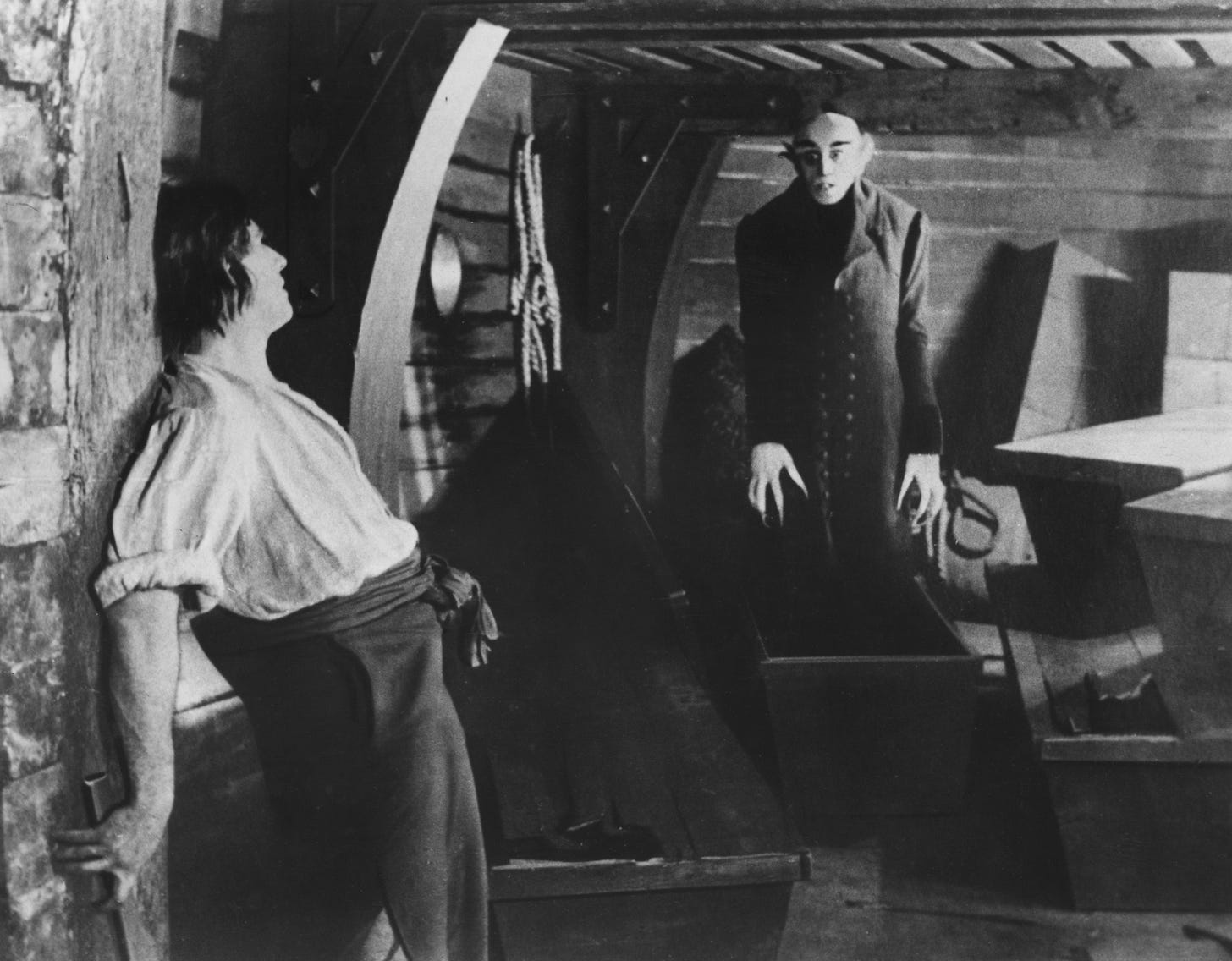
Although Nosferatu is a direct adaptation of Dracula, it developed its own visual language for vampires, with Count Orlok’s rat-like appearance and the eerie, shadowy cinematography. Thus influencing the portrayal of vampires in future films, like the vampires in Salem’s Lot (1979), Van Helsing (2004), 30 Days of Night (2007) OR my favourite one yet, the angel in Midnight Mass (2021).
On that note, I did write a review of this show four years ago (Oh my God, it has been four years already?!) So, let me know in the comments below if you’re interested!
(I also wrote about my thoughts on the book Dracula by Bram Stoker here.)
This movie has also pioneered many cinematic techniques that would become the staples of the horror genre. Like its use of expressionistic lighting, eerie shadows, and unsettling compositions helped establish the mood of dread and tension that defines horror films.
Anyway, despite the legal challenges it faced, Nosferatu continues to become iconic and is now regarded as one of the greatest horror films of all time. It has been studied for its atmospheric tension, its role in the development of horror cinema and its portrayal of monstrosity and fear. Like its iconic imagery where the haunting scene of Orlok’s shadow, climbing the stairs. It has become embedded in popular culture.
Now, to my favourite bits in the film…
In Nosferatu, you will recognise the flower lilac throughout the whole film. First, when she first encounters Count Orlok, at her wedding, when Thomas brings her a bouquet upon receiving news about travelling to Transylvania for a commission, and at the end, where she sacrifices herself. The flower, lilacs, lay around her.
Lilacs symbolises a lot of things, it’s often associated with the fleeting nature of life due to their short blossoming season. In Nosferatu, where themes of death, decay, and the unnatural persistence of life dominate, lilacs can serve as a contrast to Count Orlok’s eternal but cursed existence. Their fragility underscores the mortality of humans and the unnatural endurance of the vampire.
One thing I noticed, is when Ellen receives this bouquet, she’s upset. And tells him that the flowers will perish in “three days,” which in a later scene, where Orlok gives Ellen “three days” to decide for her fate. This highlights Ellen’s innocence and love (which can also link to her being wed to Thomas, as lilacs were also used.) She’s often depicted as a saintly, sacrificial figure who confronts death to save others.
My other theory as to why she was upset upon receiving that bouquet, is the reminder of impending doom. As mentioned earlier, her first experience with Count Orlok as a young girl was when she was surrounded by bushes of lilacs.
She mentioned to Von Franz (played by Willem Dafoe) that the hauntings stopped once she was married to Thomas, but things take a dark turn once he accepted a commission to meet Count Orlok (and I believe, by receiving that bouquet of lilacs), he has been awakened.
I feel like the lilacs, within the context of Nosferatu, were a representation of Ellen’s innocence, love, disruption, and, ultimately, her sacrificial death.
All in all, I just love this movie. I love the Gothic stylistic elements of it, and what I’m about to say next might be a controversial take BUT!!!! I also love the lack of jumpscares in this film. I’m a big fan of slasher movies with exaggerated jumpscares, but there’s something so riveting about atmospheric horror, where it just makes you feel unsettled enough without the shock factor.
My one and only complaint (well, not a complaint, just more of a thought, really) was not using Ethel Cain for the soundtrack. While I know that defeats the whole purpose of it being set, literally in the 1800’s, but… Let a girl dream. (Also cannot believe how they used Ethel in *cough* ᵢₜ ₑₙdₛ Wᵢₜₕ ᵤₛ *cough*).
Anyway, the Nosferatu (2024) movie isn’t something with cut and dry interpretations, especially because it's a Gothic Romance. Gothic Romance thrives on complexity—there’s a dark, obsessive passion that often reflects society’s fears and restrictions. It leaves room for multiple takes on what’s going on between the characters, especially Count Orlok and Ellen, without offering a clear, definitive answer. The way they interact, what drives them, and what their relationships truly mean are open to interpretation.
When we try to look at the movie from a modern perspective, like applying mental health concepts, it feels a bit off. The film is set in the 1800s, and during that time, mental health was understood differently, or even not understood at all. People back then didn’t have the same psychological frameworks we do today. If we tried to slap modern terms like anxiety or obsession on the characters’ behaviours, it’s kind of anachronistic. (Had to really dig deep through Thesaurus, Google Translate and ChatGPT for this, as a bilingual who’s trying to explain “anachronistic” without knowing how to explain it properly.)
In the 1800s, they’d have been interpreted more through moral or supernatural lenses than any psychological terms we use now. So, it’s a bit odd to apply today’s views on mental health directly to the characters because it doesn’t really match how society viewed things back then.
(
explained it so perfectly in this TikTok.)That said, looking at it through a modern lens can still offer something, but we need to be aware of the context the film was made in. Ultimately, there’s no “right” way to interpret Nosferatu—it’s all about perspective. Whether you’re seeing it through the Gothic Romance angle or picking up on the timeless human emotions, the film is meant to leave you with more questions than answers. The beauty of it is that it invites you to explore and engage with its themes, but you’ve got to stay open to whatever interpretations come your way.
There's really no one right answer, and that's what makes it interesting.
Some of my favourite comments/interpretations from her video:





